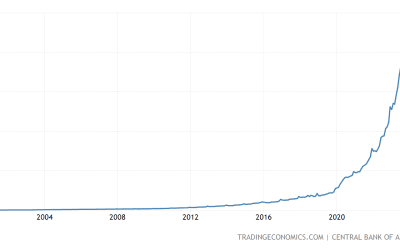
It has been common for almost a century now (that is, ever since the end of World War I) for schemes for global financial system reform to proceed on the premise that governments must play a leading part in designing both national and international financial arrangements. My own proposal proceeds from what I imagine will be a much more controversial starting point. This is that the conventional, government-driven approach to reform has consistently failed.
It failed, first of all, in the decades after World War I, when governments, by attempting to erect “gold exchange” standards to replace the prewar “classical” gold standard, set the stage for the Great Depression. It failed again after World War II, with the Bretton-Woods System, which had hardly been completed when it began unraveling in the course of the late 1960s. And it has failed recently, when the Basel Accord, which was supposed to standardize and improve worldwide prudential regulations, instead proved to be a major contributing cause of the subprime lending crisis.
The suggestion that governments make poor financial-system “architects” will perhaps be answered with the retort that market forces alone cannot be expected to do better. But that response, I submit, is ill-informed. True, the sort of financial order to which market forces give rise is in a strict sense not “architecture” at all: it doesn’t reflect any deliberate plan or blue print. It is instead a “spontaneous” order, of the same sort that underlies most of the order one observes in market-based societies. And history shows that, whenever financial institutions, whether domestic or global, have been allowed to develop freely, the results have been far more satisfactory than those from government-designed schemes.
Consider first domestic financial systems. We are accustomed nowadays to believe that such systems are bound to be unstable unless supervised by alert central bankers and propped-up by mandatory deposit insurance. But that isn’t so. Consider the Scottish and Canadian financial systems of the 19th-century. Neither involved a central bank or deposit insurance. Nor was either subject to any other substantial regulatory interference. Yet both had remarkable records of stability. Although England had the world’s most prestigious central bank, it suffered many more crises than its northern neighbor. And although the US established the Fed in 1914, it faced its worst banking crisis ever at the start of the Great Depression, while in Canada, which still had no central bank at the time, not a single bank failed.
What allowed the less “planned” systems to succeed while their planned counterparts failed? The answer is that by being left free the less-regulated systems were allowed to become robust, whereas their regulated counterparts were enfeebled by legislation. US banks, for instance, were prevented from establishing branch networks, while English banks were hindered, first by the so-called six-partner rule, and then by the concentration of note issue privileges in the Bank of England. (The privileges enjoyed by all of today’s central banks are, by the way, privileges denied to commercial banks, weakening the latter correspondingly and thus adding to their apparent dependence upon a “lender of last resort.”)
Globally, the classical gold standard, which had its heyday in the four decades preceding World War I, though partly a result of deliberate design (including legislation undoing several participant nations’ former “bimetallic” systems) was largely spontaneous—a natural outgrowth of the convertibility of the various participating nations’ currencies into a common metal. Although central banks took part, they played no essential role, and indeed tended to interfere with rather than enhance the system’s ordinary adjustment mechanisms. Yet the system was on the whole successful, giving rise to a combination of price-level and exchange-rate stability such as has never been witnessed since, and notwithstanding the various attempts, already mentioned, to come up with new global financial “architecture” capable of reproducing if not bettering its achievements.
In light of these historical facts, what is the best hope for revamping our present global financial architecture? That hope rests, I submit, not in any new plan or blueprint, to be implemented by government bureaucrats, but on the elimination of existing barriers to the free development—free evolution, I should say (for unlike architecture it is an organic development that never ceases to revise itself)—of international financial institutions. That means, among other things, eliminating barriers to international financial diversification—the most basic of all market-based sources of financial stability—and the drawing-back of government safety nets, meaning explicit and implicit government guarantees that presently serve as a powerful non-market inducement toward excessive financial risk taking.
In conclusion, financial architects have been attempting to reshape the global financial system according to their blueprints for achieving financial stability for several generations now; yet though their efforts have given rise to an immense pile of financial regulation, they have not been marked by any corresponding improvement in price-level and exchange rate stability or by the elimination of severe financial crises. Far from justifying another round of blueprints and new construction based on such, the times cry out for a more humble, bottom-up approach to financial restructuring, if not for the outright demolition of past financial architects’ many ill-conceived follies.




